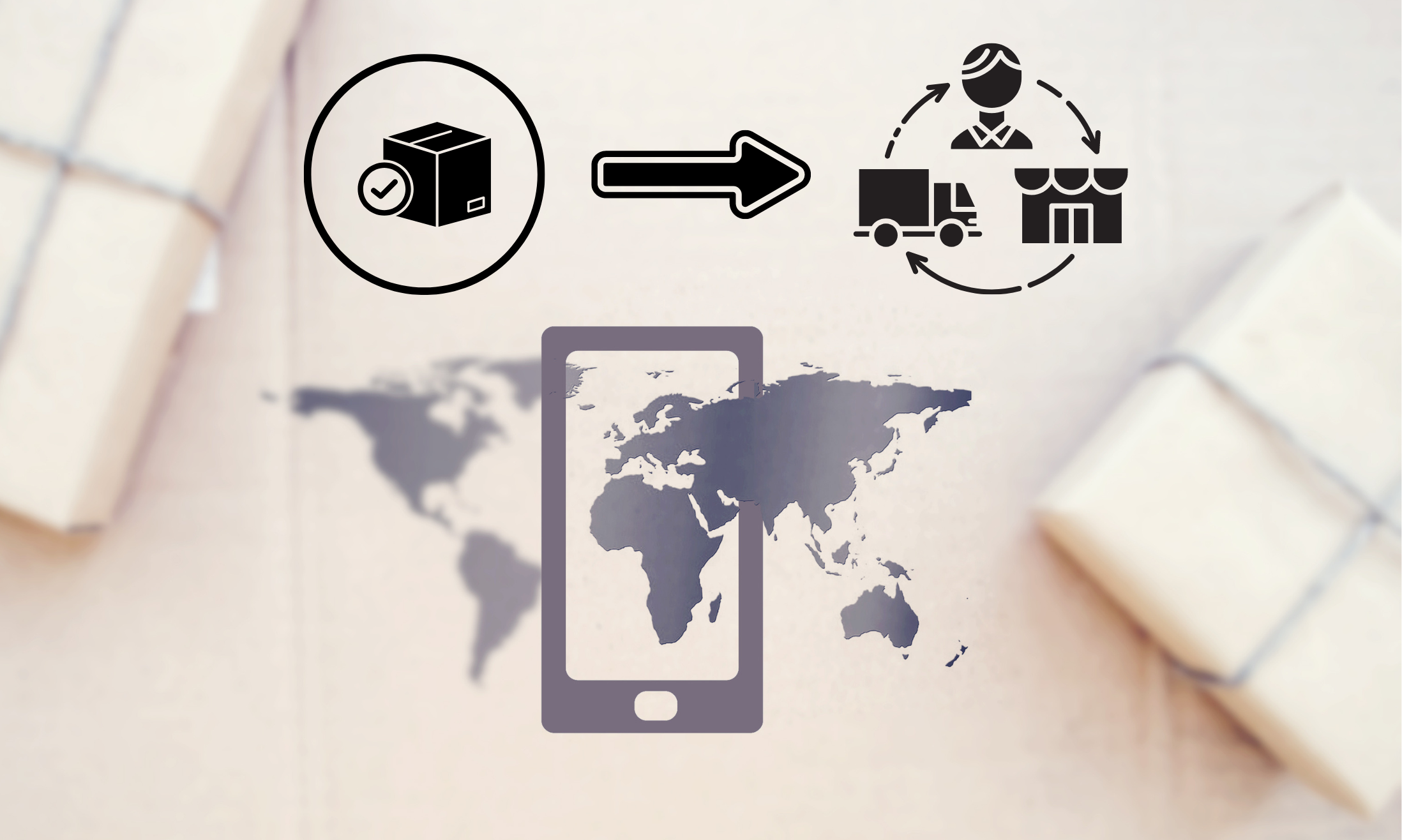Ever thought of running a shop that’s open 24/7 and serves people worldwide? That’s ecommerce for you. In today’s digital age, buying and selling online isn’t just a trend; it’s a massive money-making opportunity.
Whether you’re new to the scene or just looking to boost your online earnings, we’ve got you covered. Join us as we explore the simple yet powerful ways to make money with ecommerce. Let’s turn those clicks into cash together!
Contents
How to Make Money with Ecommerce
Making money with ecommerce involves building and running an online store to sell products or services. First, select a niche or industry that interests you and has a demand in the market. Research your competitors and target audience to understand what products or services are in demand.
Then, create a detailed business plan that outlines your goals, budget, and strategies. There are various business models that you can choose and follow.
1. White Labeling
White labeling is a strategic approach where a company chooses to market and sell a product under its own name and logo. However, rather than developing or manufacturing the product from scratch, businesses opt to procure it from a third-party distributor.
This business model is particularly popular in heavily reproduced industries such as fashion and cosmetics. When you white label a product, you get the opportunity to place your unique brand identity on an existing product, effectively making it your own.
This means you can leverage your brand’s reputation, trustworthiness, and customer base to sell a product without the time-consuming and costly process of product development.
One of the most compelling reasons to embrace white labeling is its cost-effectiveness, making it an attractive option for startups and small businesses. By choosing to white label, you circumvent the substantial upfront expenses associated with product development and manufacturing. This cost-saving aspect can significantly boost your business’s profitability, especially during the early stages of operation.
2. Private Labeling

From specifications to packaging and branding, private labeling empowers businesses to craft products that bear their unique identity and vision.
Retailers exercise authority over every aspect of the product, dictating what goes into it, how it’s packaged, and even the aesthetic details such as label design. This level of control enables businesses to create distinctive and exclusive products that align precisely with their brand’s identity and customer preferences.
With private labeling, businesses collaborate with third-party manufacturers to transform their creative ideas and designs into tangible products. This strategic partnership eliminates the need for businesses to invest in building their own manufacturing facilities. Instead, they leverage the expertise and production capabilities of established manufacturers while retaining the rights to sell these products under their brand.
While private labeling offers remarkable advantages, it’s important to note that initial costs can vary significantly. Therefore, this approach is often best suited for brands with sufficient resources and well-defined product designs or unique ideas.
3. Subscription
Subscription ecommerce stands as one of the most dynamic and promising business models. It offers flexibility for consumers and sustainability for merchants.
In simple terms, it means letting customers subscribe to products or services they regularly need. This transformative model not only simplifies the shopping experience but also has the potential to significantly increase a customer’s lifetime value. It’s a win-win scenario, fostering loyalty and satisfaction.
Subscriptions provide a convenient, personalized, and cost-effective way to shop regularly. Customers gain access to a streamlined and personalized way to acquire the items they need regularly. This approach aligns with the modern consumer’s desire for hassle-free shopping experiences tailored to their specific preferences.
Unlike traditional ecommerce, subscriptions offer a steady income stream. This financial stability helps businesses to calculate precisely how much revenue they can expect each month. Consequently, it becomes easier to forecast the financial future, make informed decisions, and allocate resources efficiently.
4. Dropshipping

E-commerce dropshipping is a business model that offers sellers the unique advantage of selling products without the burden of maintaining inventory. Instead, sellers establish partnerships with manufacturers who handle the shipping process directly to customers placing orders through the seller’s online platform.
With dropshipping, sellers can focus their efforts on marketing and sales without the concerns of fluctuating product demand and inventory management. This business model’s growing popularity is evident in the increasing number of dropshipping sellers and manufacturers entering the market.
One of the primary benefits of dropshipping is the avoidance of upfront inventory costs. Sellers do not need to purchase and store products before selling them. This significantly reduces financial risk, making dropshipping an attractive option, especially for those who are risk-averse or have limited capital to invest.
While dropshipping offers convenience, it also comes with risks, primarily related to quality control. Sellers’ brands are on the line, and if a supplier fails to meet quality standards or deliver within a reasonable timeframe, it’s the seller’s reputation that suffers.
5. Wholesale
Wholesale ecommerce is gaining popularity as traditional B2B businesses embrace online operations. In this business-to-business (B2B) model, instead of selling products individually to consumers, businesses sell them in large quantities at discounted rates to other businesses. This makes them the link between manufacturers and distributors or retailers.
In the world of wholesale ecommerce, you’ll come across three main types of wholesalers:
- Merchant Wholesalers: These follow the traditional model. They buy in bulk from manufacturers and sell to other businesses. Merchant wholesalers have deep industry knowledge and experience.
- Agents/Brokers: These negotiators work either directly for merchant wholesalers or as independent contractors. Their goal is to secure the best prices for the wholesalers they represent. They’re experts in the financial side of wholesaling.
- Sales and Distribution Teams: These teams operate from a manufacturer’s office. They handle wholesale deals, from pricing products to making sales. While they have direct ties to manufacturers, some may question their impartiality in creating fair sales plans.
6. Print on Demand

Print-on-demand (POD) is a versatile business model that transforms how products like apparel, accessories, and home decor are created and delivered. In this model, items are manufactured only when a customer places an order, eliminating the need for inventory management and upfront costs.
POD businesses leverage digital printing technology to create products on-demand, allowing for remarkable customization and flexibility. Designs are brought to life only when an order is received, enabling sellers to offer personalized items to their customers.
This also means you can start your venture without the need for extensive entrepreneurial, marketing, or artistic experience. POD service providers typically offer straightforward guides and instructions to assist you in getting started.
While POD offers numerous advantages, there are also some downsides to consider:
- Limited Control: POD may limit your control over print and product quality. To address this, you can order samples and switch suppliers if you’re dissatisfied with the results.
- Order Fulfillment Time: Since orders are printed only after a sale is made, they can’t be packaged and shipped immediately, potentially leading to longer fulfillment times.
- Higher Per-Product Costs: The nature of the POD model may result in higher per-product costs compared to bulk purchasing, affecting your profit margins.
- Customer Relations: While suppliers handle order fulfillment, customers will turn to you if issues arise. It’s your responsibility to address any customer concerns.
How to Get Rich with Ecommerce
Due to the growth of technology, eCommerce is becoming more and more popular. Making money through eCommerce is uncontroversially simpler and more effective than offline ones.
However, Rome wasn’t built in a day. Making a fortune through eCommerce may be more convenient but by no means easy. You still need to invest time and effort to get rich through it seriously.
This section explores strategies, insights, and approaches to not only make money but to thrive and find financial success with your ecommerce business.
Conduct Research

Research lays the foundation for a thriving business. If you’re considering starting an ecommerce store but haven’t pinpointed your niche, market research is your compass. Dive into industries that not only thrive today but also show promise for the future.
Begin by identifying market gaps – products in demand but with limited supply. These are your tickets to uniqueness in a competitive market. When customers need these products, they’ll remember you. While it might seem counterintuitive, narrowing down your target audience can actually boost your sales. By operating in a niche market, you face less competition and can establish a stronger foothold.
Keep an eye out for seasonal trending products as well. They not only attract new buyers but also encourage existing customers to make more purchases. Combining market gap products with trending items is a strategic move. It’s like hitting the jackpot – a niche market with high demand and a touch of trending appeal can lead to substantial profits.
Invest in Your Online Store

Your online store is more than a platform to sell products; it’s your brand’s digital persona. Start by choosing a memorable name, crafting a catchy slogan, and selecting colors that resonate with your product and business personality. Building a brand identity helps customers remember your business and sets the stage for long-term success.
A good online store must excel in design and functionality. On the design front, your website should reflect your brand’s unique personality clearly. The interface should be visually appealing, professional, and user-friendly. First impressions matter, and your website is often the first interaction customers have with your brand.
Functionality is equally crucial. Your online store should offer all the standard features expected of a website. More importantly, it must cater to customers’ needs throughout the purchasing journey. This includes features like product comparison, efficient search functionality, and a variety of payment gateway options.
Building a standard website can be challenging, especially for those without technical expertise. Consider seeking professional help from experienced ecommerce developers like Tigren. Our team boasts over a decade of experience in developing ecommerce websites. We are confident that you’ll get a beautiful, feature-rich online store that’s primed for success while working with us.
Promote Properly
Ongoing promotion is the lifeblood of revenue generation. In this section, we’ll take a look at the methods you can employ to effectively promote your ecommerce website and connect with consumers.
- Paid advertising: a powerful avenue to capture the attention of millions of potential customers. While it’s a potent strategy, it does come with a cost, so it’s essential to equip yourself with knowledge about these advertising tools. These platforms offer immense reach and targeting capabilities, making them ideal for expanding your brand’s visibility.
- Influencer marketing: the era of social media have given rise to a diverse pool of influencers. Collaborating with influencers can be a strategic move, but the cost varies widely based on their reach and niche. Carefully select influencers who align with your business to endorse your products and services.
- Email marketing: it is a potent form of remarketing that targets customers who have engaged with your business. Since you’re reconnecting with an existing audience, the costs can be lower, and the conversion rates tend to be higher. It’s a powerful tool for nurturing and reengaging with your customer base.
- SEO: a marketing strategy that enables your website to rank higher in search engine results, reaching audiences actively seeking your products. Many experts consider SEO one of the most cost-effective ways to drive organic traffic and increase sales.
- Affiliation programs: different from traditional affiliate marketing, affiliation programs involve the store owner partnering with other entities to sell their products. These collaborations can open new sales channels and expand your product offerings, driving growth for your ecommerce business.
Each method comes with its unique benefits and costs, so a well-rounded promotional strategy can encompass a combination of these tactics to maximize your ecommerce profitability.
Final Thoughts
The digital landscape is full of chances for those willing to explore. Making money in ecommerce isn’t just about transactions; it’s a transformative journey.
Ecommerce isn’t just a way to make money; it’s a gateway to financial prosperity and a canvas for entrepreneurial dreams to come true. It’s where innovation meets consumer needs, where businesses thrive by delivering value, and where persistence pays off.
Whether you’re starting a new ecommerce venture or giving life to an existing one, remember that your journey is uniquely yours. While the insights and strategies in this guide serve as a guide, it’s your vision, determination, and adaptability that will shape your destiny.


